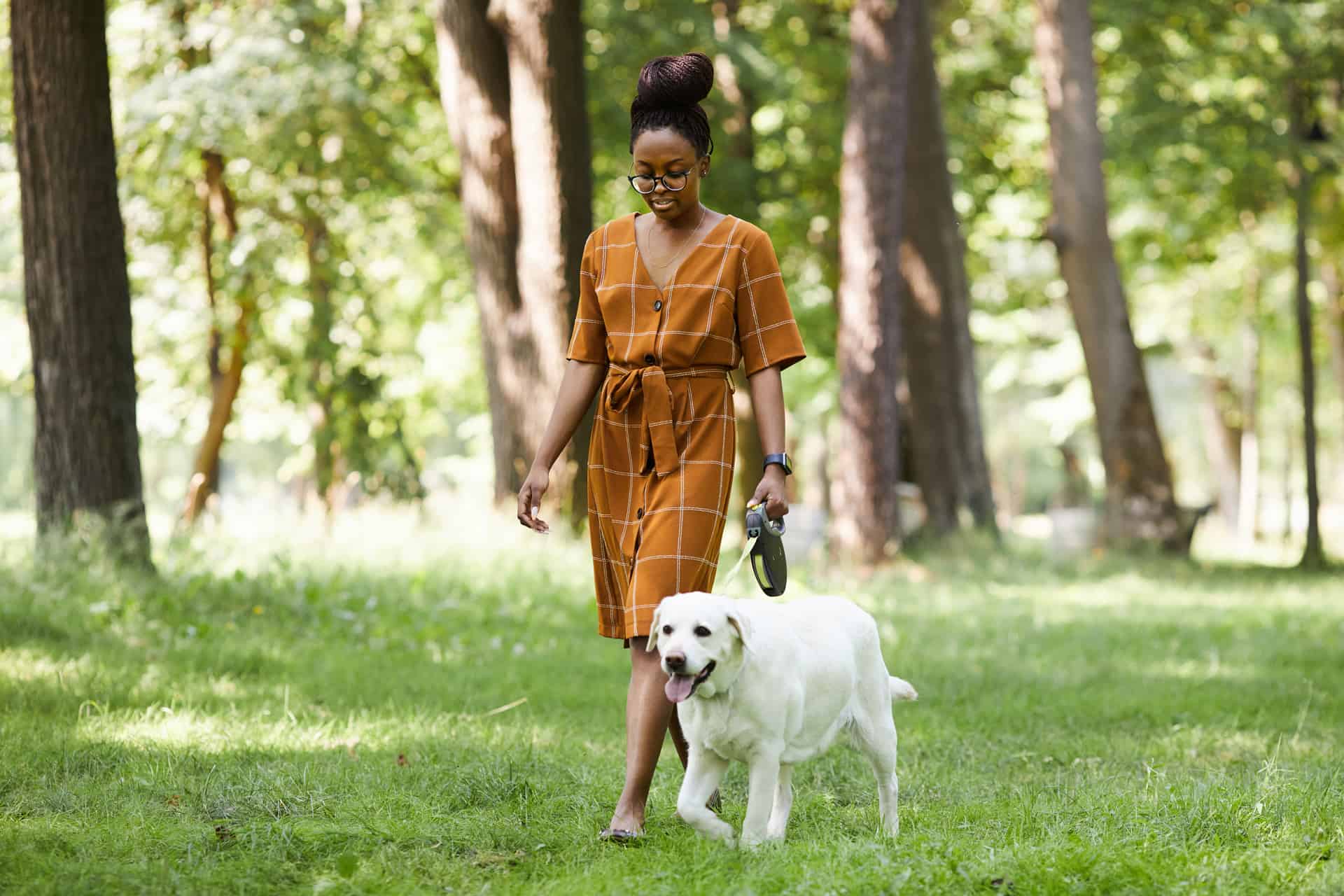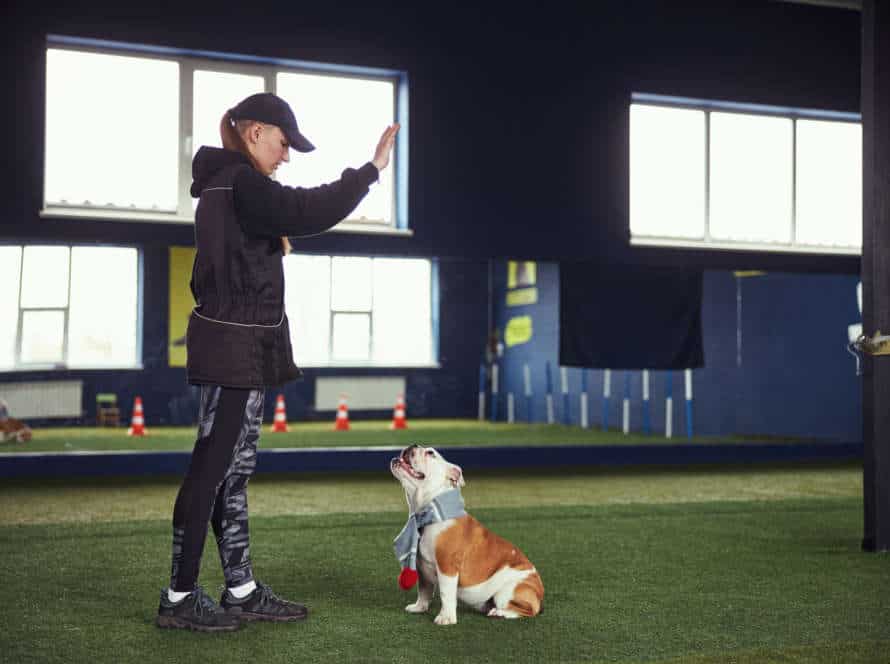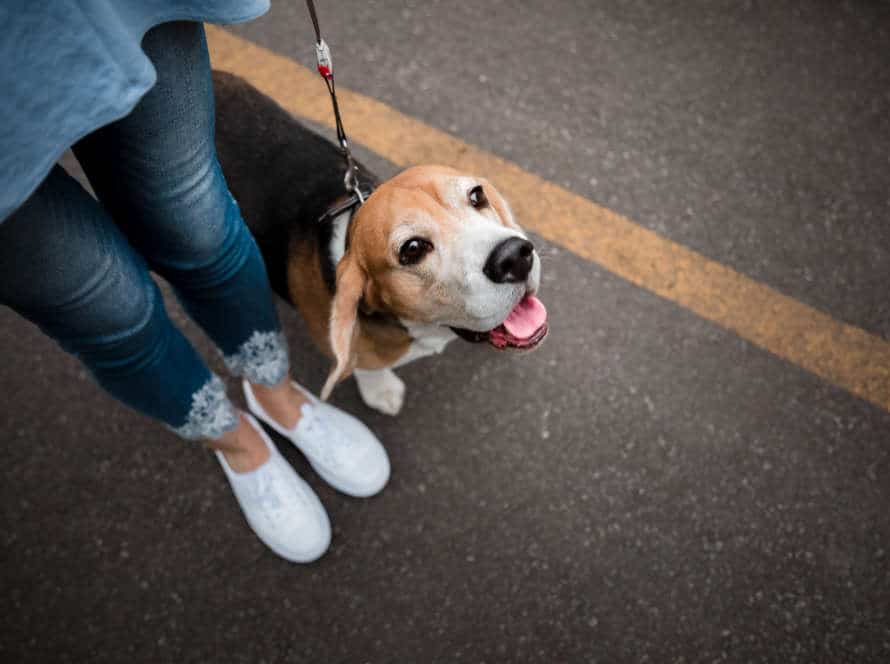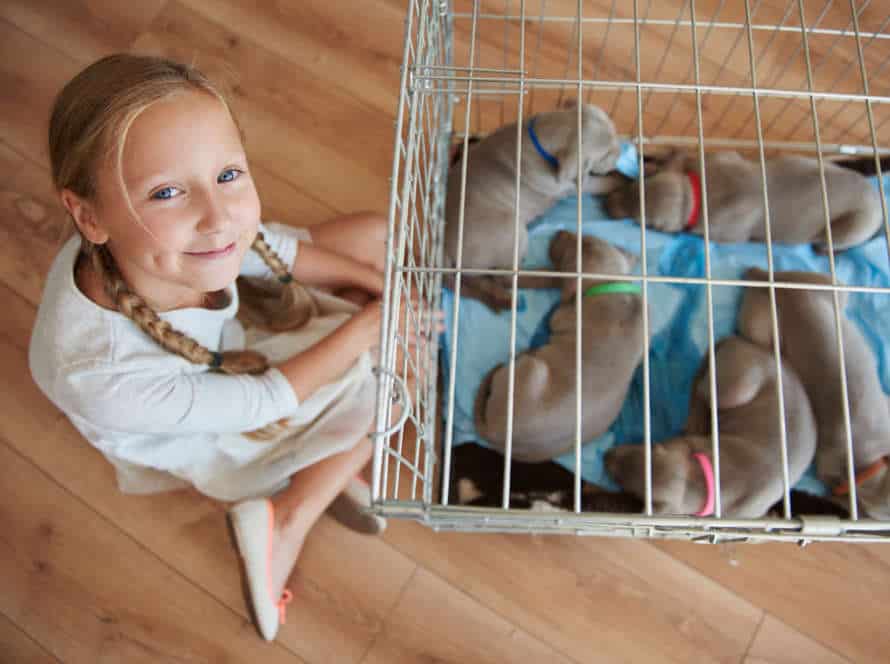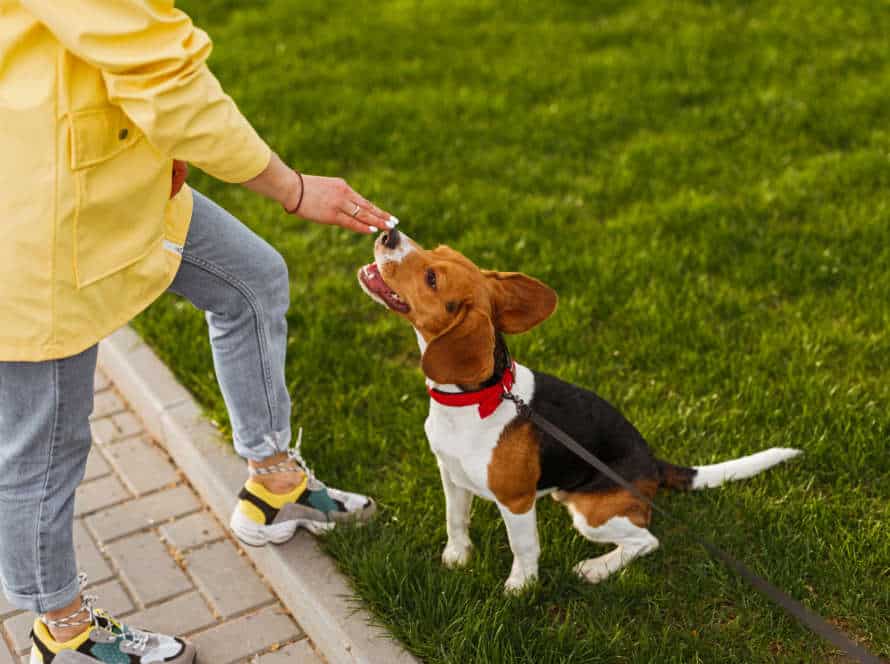Understanding Heel Training
Heel training with your pup? Essential! It’s a major part of obedience training. You and your dog can have an enjoyable and beneficial time when you teach them to stay close and walk on a leash. Before you start, it’s good to know the basics of heel training and the best techniques for success. Let’s take a look!
What is Heel Training?
Heel training is a way to teach your pup to walk by you without yanking the leash. It’s useful for keeping control and avoiding accidents. Here’s how to do it:
- Start in a peaceful spot, like indoors or outside in the backyard, with your pup on a leash.
- Hold the leash with your dominant hand and stand on your pup’s non-dominant side.
- Walk slowly and use verbal cues like “heel” or “come with me” to get your pup to stay by you.
- Give treats or praise when they’re walking well and in the right spot.
Do this regularly and make it harder by going to busier areas or crowded places. With patience and consistency, your pup will eventually learn to heel and love the walks with you. Pro tip: Sign your pup up for an obedience class for better training.
Why is Heel Training Important for Dogs?
Heel training is key for any dog owner. It builds a bond and teaches ’em to walk appropriately in public. Here’s why it’s so crucial:
- Safety: Keeps Fido safe when out and about. No pulling or running away.
- Exercise: Mental and physical stimulation. Improves coordination and focus.
- Socialization: Learns to become familiar with surroundings, other pets, and people without getting distracted or aggressive.
To train your pup to heel:
- Start in a quiet place, with few distractions.
- Use treats, praise, and positive reinforcement for good behaviour.
- Keep training sessions short – max 15 mins.
- Be patient and consistent – practice will help your pup know what’s expected.
Heel training takes time and practice, but it’s worth it for your pup’s physical and emotional well-being.
What Breeds are Best Suited for Heel Training?
Heel training for dogs is vital to obedience. But not all breeds learn the same way. Some breeds are better at it. Here are the best for heel training:
- German Shepherd – Smart, loyal, obedient.
- Labrador Retriever – Friendly, obedient, eager to please.
- Golden Retriever – Intelligent, gentle, friendly. Respond well to positive reinforcement.
- Border Collie – Highly intelligent, energetic, responsive to training.
- Australian Shepherd – Sharp intelligence, loyalty, trainable.
Pro Tip: Any breed can be trained through patience, consistency and proper techniques.
Tools for Heel Training
Heel training is key for teaching your pup obedience and building a trustful bond. There are lots of tools to assist with this, like reward-based training, clickers, and treats.
We’ll explore all the tools that can help you on your heel training journey. Rewards, leashes, and clickers – we’ll go over it all!
Leash and Collar Selection
When choosing a leash and collar for heel training your pup, it’s important to pick the right tools. Here’s what to consider:
Leash:
- Length: 4-6 ft.
- Material: Leather or nylon.
- Width: 1/2-3/4 inch.
Collar:
- Material: Leather or nylon.
- Width: 1 inch for big dogs; 3/4 inch for small-medium.
- Type: Flat, snug fit with no metal pieces.
Picking the proper leash & collar = success in heel training!
Choosing the Right Rewards
Choosing rewards is critical for successful heel training of your pup. Here are some pointers:
- Use treats your doggie loves, such as cooked chicken, cheese, or hot dog.
- Pick treats that can be quickly eaten, so your pup can get back to training fast.
- Mix up the rewards, so your pup won’t get bored of the same thing.
- Include verbal praise, petting, and playtime in the rewards.
- Avoid punishment or aversive training techniques, as this can have a bad effect on your pup’s behavior, trust, and training.
The Importance of Consistency
Consistency is key when heel training your pup. It ensures the training is effective and your dog learns the behavior fast. Here are some tools to help maintain consistency with your training:
- Treats – Use the same type of treat to keep your dog interested and reinforce the behavior.
- Leash – Necessary to guide your dog and ensure desired distance and position. Use the same type of leash and keep the length consistent.
- Commands – Clear and concise commands that are easy to understand. Use the same commands and tone of voice.
By being consistent with these tools, you’ll have a happy and well-trained pup!
Teaching Basic Commands
Teaching your pooch simple commands like “heel” not only keeps him safe, but also makes walks with him more fun. It also means you have control of the walk – not him! Here, we’ll talk about the best way to teach your canine the “heel” command. Plus, how you can make him an ace heeling in no time.
Training “Sit” and “Stay”
Teach your pup basic commands like “sit” & “stay“. This builds trust, direction & safety between you two.
To train for “sit“:
- Hold a treat close to their nose.
- Move it slowly up, so their head follows.
- Their bottom will lower.
- Say “sit” & give them the treat as a reward.
To train for “stay“:
- Get them to sit first.
- Walk away with your hand out, palm facing them. Say “stay!”
- If they stay, give them a treat & praise.
- Gradually increase the distance & duration of “stay“.
Patience, consistency & positive reinforcement are key. Aim for 10-15 min sessions to prevent boredom.
Using Positive Reinforcement
Positive reinforcement is a great way to teach your pup to follow the “Heel” command! Here’s how:
- First, train them to respond to the “Sit” and “Stay” commands.
- Show them a treat or toy they love.
- Hold the treat at your side so they can see it.
- Start walking, and say “Heel” while keeping the treat in view.
- If they follow you and stay in position, give them the treat and praise them.
- If they start to wander, stop and say “No.” When they look at you or get back to your side, start again.
- Do this for 10-15 minutes daily until they can do the “Heel” command easily.
Always use positive reinforcement – like treats, praise, and toys – to make training fun and engaging for them.
Incorporating Clicker Training
Clicker training is a good, kind way to teach your pup the basics. It uses rewards to encourage good behaviors and helps build a strong bond between you and your pup. Here’s how to get your pup to heel:
- Start with your pup on a leash next to you.
- Keep the leash tight – this will keep your pup close by.
- When your pup is in the right spot, click the clicker and praise them.
- Do this until your pup gets used to the idea.
- Gradually extend the time in the heel position.
- Be patient and consistent.
- Split up the training into short sessions and always end on a good note with a treat or praise.
Your pup will soon be walking by your side, no problem!
Pro Tip: Clicker training works for other tricks and commands like ‘sit’, ‘stay’ and ‘come’. Remember to always use positive reinforcement.
Introducing Heel Training
Heel training? A must-do! A part of basic puppy obedience. To heel train, you lead and your pup follows commands. Building a strong bond with your pup, teaching him right – that’s the goal. So, let’s get going. How can we make this happen? Let’s learn how to heel train your pup.
Teaching “With Me” Command
Teaching “With Me” is key for heel training. It tells your pup to stay close while walking. Here’s how to do it:
- Start with short sessions, reward good behavior with treats and praise.
- Put a leash on your pup and keep it short to be close but still let them move.
- Begin walking and use the “With Me” command if they try to pull or wander.
- When you say “With Me”, stand still until your pup comes back, then treat and keep walking.
- Gradually increase distance and duration. Always reward good and correct bad.
- Patience and consistency are important. Lots of praise and affection for a job well done!
Tip: Use a harness instead of a collar for better control and comfort.
Walking in Circles to Introduce Heel
Exercise your pup with heel training! Try walking in circles.
- Hold a treat or toy in one hand and get your pup’s attention.
- Take a step forward with your left foot. Walk in a circle to the right. Your pooch should follow.
- Once you’ve completed the circle, reward your dog with the treat or toy.
- Say the word “heel” each time you start the circle. This will help your pup understand.
- Make the circles bigger and longer as you go.
- Your pup will learn to walk beside you with the command “heel“. No need for treats or toys!
Reward your pup often in the start of the training. This will encourage the desired behavior.
Gradually Increasing Walking Time
Gradually increasing walking time is essential for teaching your pup heel training. Here’s how to do it:
- Choose a place with no distractions.
- Attach the leash and put your dog on your preferred side.
- Give a verbal command or signal to start the training.
- Walk slowly and give rewards when they don’t pull.
- Stop after a few minutes and praise them or give a treat.
- Every day, increase the walking time by a few minutes.
Remember: consistency, patience, and positive reinforcement are key!
Mastering Heel Training
Training your pup to heel is super important! This guide will give you the knowledge and info you need. Plus, it has tips and tricks to make your pup learn fast. Let’s check it out!
Perfecting Proper Leash Tension
Getting the right leash tension is a must when you’re teaching your pup to heel. Too much tension can cause them discomfort and even harm. On the other hand, too little and your pup won’t listen or will pull away.
Here are some tips for mastering leash tension:
- Start with a loose leash. Your doggo should be able to wander freely whilst keeping the leash slack.
- Gently correct them if they start to pull or deviate. Give a short, sharp tug on the leash to get their attention and bring them back.
- Maintain a steady pace and keep reinforcing their behavior with kind words and treats.
- Utilize a hands-free leash or a waistband leash for better control and to keep your hands free.
Remember, patience and consistency are key. With time and practice, you and your pup can perfect leash tension and master heel training.
Implementing Distraction Training
Distraction training is essential for successful heel training for canines. It helps them understand that they must stay beside you, despite any distractions. Here are a few tips for including distraction training in heel training:
- Start by teaching heel training in a quiet and distraction-free place.
- Introduce distractions bit by bit – like people, other dogs, noisy sounds or a new environment.
- Positive reinforcement – treats, clickers and verbal praise – should be used to reward your dog for staying in the heel position, even with distractions.
- Gradually make the distractions more difficult as your pup learns to ignore them.
- Be patient and consistent.
- Keep training sessions short and enjoyable!
Pro-tip: Begin by limiting distractions to those your dog can manage, such as faint sounds or slight movements. As your dog gets better, increase the intensity and complexity of the distractions.
Practicing Heel in Various Environments
Train your pup to heel in different situations. Start off in a tranquil, low-distraction area like your garden or a quiet park. Hold a treat close to your leg, and use a sign like “heel” or a clicker to signify for your pup to move alongside you. Reward them with treats and compliments whenever they stay in the heel position. Step by step, add more disturbances such as people, autos, or other canines to help your dog grasp your commands in many settings. Do this on busy roads, malls, or dog parks to ace heel training in multiple environments.
Troubleshooting Common Issues
Issues when teaching pup to heel? Annoying! To make it easier, figure out potential issues and know what techniques help. Here, we list common issues and how to address them properly.
Dealing with Pulling or Running Ahead
Training your pup to heel can be tricky. Pulling and running ahead are common issues. But, there are ways to teach them to stay by your side.
Try these techniques:
- Stop and Go: Walk with your pup, and when the leash gets tight, stop. Wait for them to come back and loosen the leash. Then keep going.
- Change Direction: When they pull, suddenly switch directions. This will help them pay attention to your movements.
- Positive Reinforcement: Reward them with praises and treats when they walk calmly. Stop and praise them when they pull or run ahead.
With patience and persistence, your pup can learn to walk calmly beside you. No more pulling or running ahead!
Stopping Your Dog from Lagging Behind
Teaching your pup to stay right by your side is a must for leash walks and can make your friendship with your pet even better. But it can be a challenge when your canine companion is dawdling and not keeping pace. Fortunately, there are ways to train your pup to heel and keep up. Here are some tips to aid you:
- Offer treats to inspire your pup to stick close and reward when they do.
- Train your dog to focus on you with commands like “look” or “watch me“.
- Utilize a shorter leash to keep your pup nearby.
- Utilize positive reinforcement and don’t punish your pup for dragging behind.
- Be patient and consistent in your training.
By following these steps, you can learn how to get your pup to heel like an expert, have fun on leash walks, and maintain a great pace.
Overcoming Distractions and Temptations
Training a pup to be obedient can be tough. A common problem is managing distractions and temptations when teaching them to heel. These tips can help you:
- Begin in a quiet and well-known place, where your pup is less likely to be sidetracked.
- Utilize a leash and collar to teach them to heel.
- Employ treats as a reward when your pup follows the command correctly.
- Gradually bring in distractions and temptations, such as other people or canines, in small amounts.
- Remain composed and patient with your pup, and avoid punishing them for misbehaving during training.
- Practice often with your pup, and over time, they will become better at heeling despite temptations and distractions.
Pro tip: Consistency and patience are the keys to overcoming temptations and distractions while training your pup. By beginning in a quiet atmosphere and gradually introducing distractions, you can train your pup to behave in any scenario.
Advanced Heel Training Techniques
Heel training is an advanced skill for dogs – but essential! The right techniques can help your dog to heel on command and stay in line with you during your walks. No matter if you’re a beginner or have been training your pup for a while, this guide will help you understand how to teach them.
Step-by-step, you’ll learn how to get your pup to heel.
Off-Leash Heel
Off-leash heel is a tricky training method. It requires your pup to stay close without a leash.
To perfect this skill, here’s a guide:
- Begin by making sure your dog is trained in on-leash heel.
- When your pup can do that with no tension on the leash, move to off-leash training.
- Start in a low-distraction area, like your backyard.
- Reward your pup for staying close, and for keeping the heel position.
- Gradually add distractions, like other people and pets, to test your pup’s focus.
- Be patient, consistent, and use positive reinforcement. Give treats, praises and toys to keep your pooch interested.
Turning Without Breaking Heel
Teaching your pooch to heel without breaking is a tough task. It requires patience, commitment and some advanced training. Here are a few tips for training:
- Start with small turns.
- Use treats or toys to keep their focus on you.
- Keep the leash short to avoid breaking heel.
- Reward good behaviour with treats or praise.
- Consistent practice will have your pup heel turning in no time!
Heel in Competitive Environments.
To ace competitions with your dog, advanced training is a must! Here are some tips to take your pup’s heel training up a notch:
- Master the basics first. Get your dog familiar with the basic heel command.
- Slowly add distractions. Start with small things like toys and work your way up to bigger distractions like people and other dogs.
- Vary the environment. Train your pet to heel in parks, busy roads, or other competition-like settings.
- Mix up distance and speed. Teach your pup to change their pace and stay in heel position even when you go faster or slower.
- Praise good behavior. Positive reinforcement like treats, hugs, and words of encouragement will reward your pup for good heel position.
Regularly incorporate these advanced techniques to get your pup ready for any competitive situation!
Frequently Asked Questions
Q: What is heel training for dogs and why is it important?
A: Heel training is teaching a dog to walk alongside its owner, with the dog’s shoulder next to the owner’s leg. It’s important because it helps create a bond between the owner and dog, and makes for a more pleasant and controlled walking experience.
Q: How do I start teaching my dog to heel?
A: Start by putting your dog on a leash and standing with it on your left side. Hold a treat in your left hand near your dog’s nose and walk forward, saying “heel” in a calm voice. When your dog walks next to you without pulling, give it the treat and praise it. Repeat this until your dog consistently walks by your side on a loose leash.
Q: What if my dog starts pulling while we’re walking?
A: Stop walking immediately and wait for your dog to stop pulling. When your dog looks up at you or starts to move towards you, say “heel” and start walking again. Repeat this until your dog learns that it only gets to walk when it’s walking calmly by your side.
Q: How long does it take to train a dog to heel?
A: The length of time it takes depends on the dog’s breed, age, and temperament, as well as how consistent and patient the owner is with training. Some dogs may learn quickly, while others may take several months of training and practice. It’s important to be patient and consistent with training, even if progress is slow.
Q: What are some common mistakes to avoid when training a dog to heel?
A: Some common mistakes include using a retractable leash, not using treats or praise to reward good behavior, not being consistent with the “heel” command, and not being patient with the training process. It’s important to understand that heel training takes time and practice, and not to get frustrated if your dog isn’t learning as quickly as you’d like.
Q: Can I teach an older dog to heel?
A: Yes, it’s never too late to start training a dog to heel. However, older dogs may have developed bad habits or behaviors that require more patience and persistence to correct. It’s important to start slowly and be consistent with training, and to work with a professional trainer if necessary.

